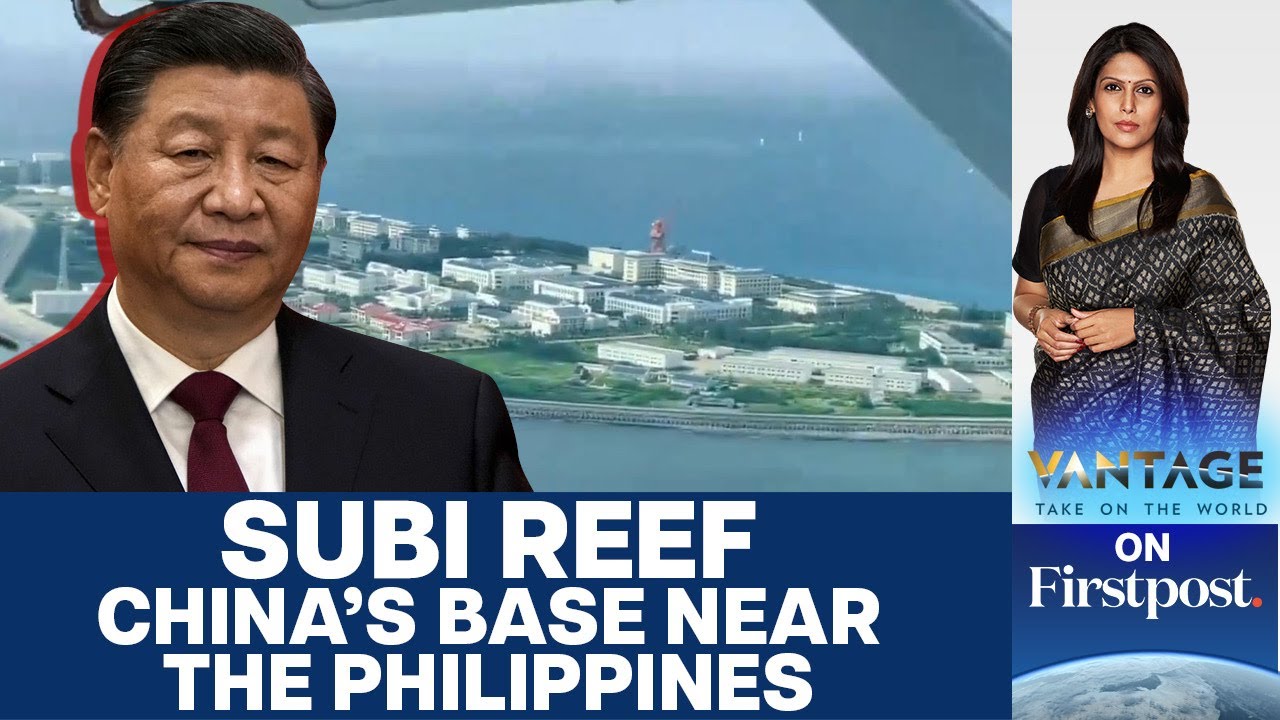The Escalating Sino-Philippine South China Sea Dispute Explained
Summary
TLDRThe video discusses the ongoing South China Sea disputes, focusing on China's territorial claims and militarization of the region. It highlights recent tensions between China and the Philippines, particularly over the Second Thomas Shoal, and the potential for conflict escalation. The video also examines the implications of the US-Philippines Mutual Defense Treaty and the challenges of resolving territorial disputes in an increasingly unstable region.
Takeaways
- 🌏 The South China Sea dispute involves territorial claims over the Spratley and Paracel Islands by six countries, with China's claims being particularly expansive.
- 🏖️ China's historical claim to about 80-90% of the South China Sea is based on the 'nine-dash line' from a 1936 map, which is inconsistent with the UN Convention on the Law of the Sea.
- 🛥️ Tensions escalated in the 2010s due to China's militarization and development of the islands, including land reclamation, which is unmatched by other claimants.
- 🚢 The South China Sea is a crucial sea lane, with 60% of China's total trade and 80% of its oil imports transiting through it, which fuels China's interest in controlling the area.
- 🇺🇸 The US has been conducting 'freedom of navigation' exercises since 2013, asserting rights under the UN Charter and challenging China's maritime claims.
- 🇵🇭 The China-Philippines dispute centers on the Second Thomas Shoal, where the Philippines has maintained a presence since 1999 to reinforce its territorial claim.
- 🛡️ Recent skirmishes between Chinese and Filipino navies have involved violent tactics, including the use of water cannons, lasers, and melee weapons.
- 🔪 A recent incident involved Chinese sailors attacking Filipino counterparts with machetes and hammers, marking a dangerous escalation in the dispute.
- 📜 The Philippines has a Mutual Defense Treaty with the US, which includes a NATO-style Article 5 clause that could potentially involve the US in the conflict.
- 🤝 Despite the escalating tensions, both sides have committed to bilateral negotiations, although the prospects for a resolution seem uncertain.
- 📚 The video script also promotes 'Brilliant', a learning platform offering interactive lessons in various fields, including programming, to build essential skills.
Q & A
What is the primary focus of the video script provided?
-The video script focuses on the territorial disputes over the islands in the South China Sea, the recent escalation of tensions, and the reasons behind China's interest in these islands.
How long have the disputes over the South China Sea islands been ongoing?
-The disputes over the South China Sea islands have been going on for nearly a century, with significant escalations in the 2010s and 2020.
What is the 'nine-dash line' mentioned in the script, and what is its basis?
-The 'nine-dash line' is China's claim to about 80 to 90% of the South China Sea, based on an unofficial 1936 map by Chinese cartographer B Meu. It is inconsistent with the UN Convention on the Law of the Sea, which China has signed.
Why did the CCP start militarizing and developing the islands around 2010?
-The CCP started militarizing and developing the islands to assert their territorial claims, which included dredging the seabed to artificially enlarge the islands, in response to the perceived threat of trade embargoes and to mitigate anxieties about trade dependencies.
What is the significance of the South China Sea in terms of global trade and China's economy?
-The South China Sea is the second most used sea lane in the world, with approximately 60% of China's total trade and 80% of its oil imports transiting through the region, making it crucial for China's economy.
What are the 'freedom of navigation exercises' performed by the US around the South China Sea?
-The 'freedom of navigation exercises' are operations where US vessels sail near or around features claimed by China, asserting their rights under the UN Charter on the Law of the Sea and challenging China's maritime claims.
Why has the dispute between China and the Philippines intensified recently?
-The dispute has intensified due to China's attempts to interrupt Philippine resupply efforts to the Second Thomas Shoal, where a contingent of Philippine Marines is stationed, and the recent incident involving Chinese Coast Guard ramming a Filipino resupply boat.
What is the Second Thomas Shoal, and why is it significant in the dispute between China and the Philippines?
-The Second Thomas Shoal is a reef about 200 km from Palawan and over 1,000 km from China's southern Hainan Island. It is considered part of the Philippines, and an international tribunal ruled in 2016 that China had no legal rights to it. The Philippines has occupied it since 1999 to reinforce its territorial claim.
What is the potential implication of the recent escalation for the US, given its defense treaty with the Philippines?
-The US has a Mutual Defense Treaty with the Philippines, which includes a NATO-style Article 5 clause. If Manila deems Beijing's actions as war, it could oblige the US to get involved, as confirmed by the US Secretary of Defense.
What is the role of Brilliant in the context of this video script?
-Brilliant is mentioned as a platform for learning by doing, offering interactive lessons in various fields such as math, data analysis, programming, and AI, which are relevant skills for the job market or for personal learning.
Outlines

このセクションは有料ユーザー限定です。 アクセスするには、アップグレードをお願いします。
今すぐアップグレードMindmap

このセクションは有料ユーザー限定です。 アクセスするには、アップグレードをお願いします。
今すぐアップグレードKeywords

このセクションは有料ユーザー限定です。 アクセスするには、アップグレードをお願いします。
今すぐアップグレードHighlights

このセクションは有料ユーザー限定です。 アクセスするには、アップグレードをお願いします。
今すぐアップグレードTranscripts

このセクションは有料ユーザー限定です。 アクセスするには、アップグレードをお願いします。
今すぐアップグレード関連動画をさらに表示

Nine-Dash Line Explained

China Militarises Island near the Philippines: How will Manila React? | Vantage with Palki Sharma

More Chinese Aggression: Philippine Ships Attacked with Water Cannons | Vantage with Palki Sharma

Political Boundary Disputes & The Law Of The Sea [AP Human Geography Unit 4 Topic 5]

Ujung Pangkal Sengketa Laut China Selatan, Siapa Paling Berhak?

EXPLAINER: EXCLUSIVE ECONOMIC ZONE
5.0 / 5 (0 votes)
